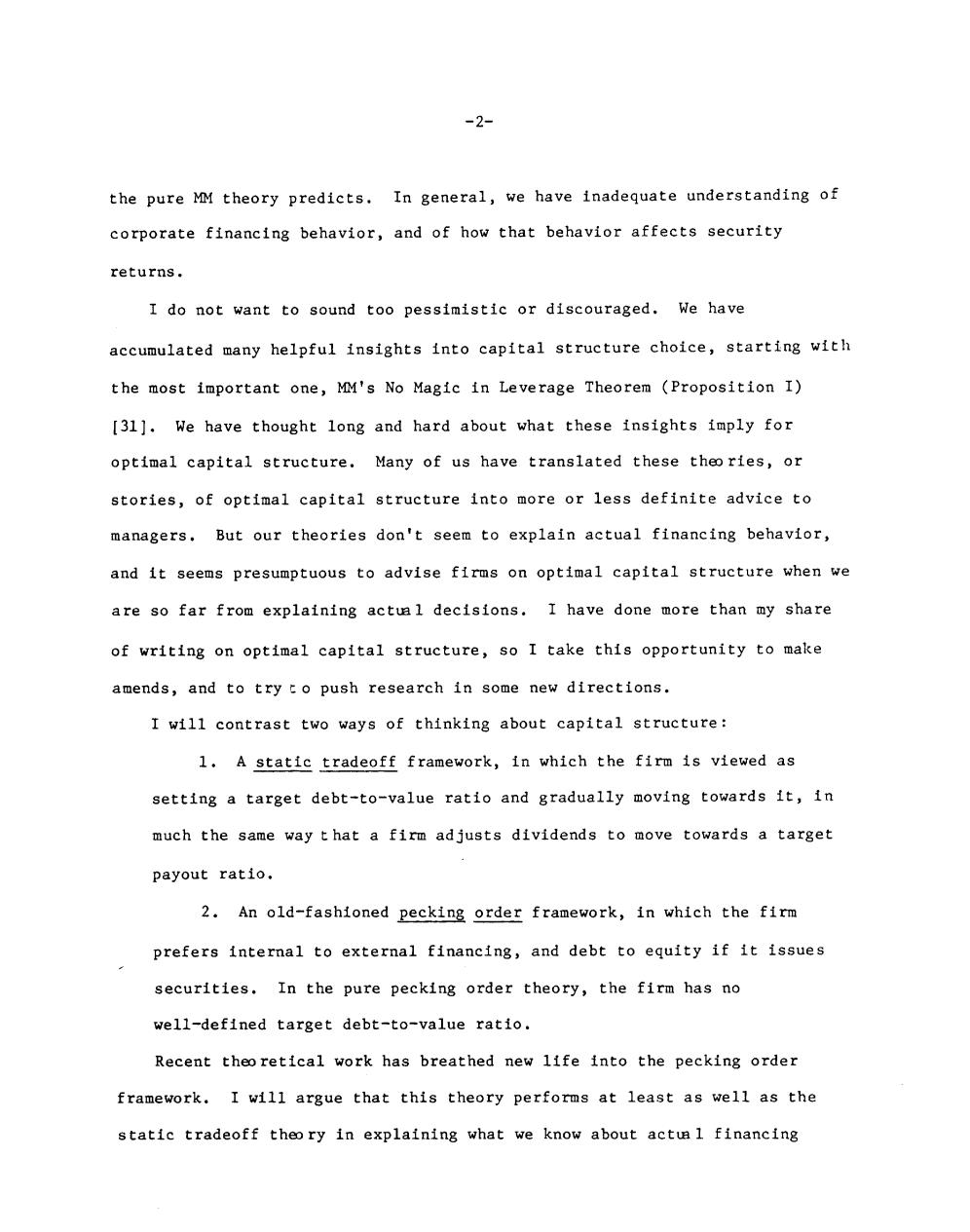正在加载图片...

-2- the pure MM theory predicts.In general,we have inadequate understanding of corporate financing behavior,and of how that behavior affects security returns. I do not want to sound too pessimistic or discouraged.We have accumulated many helpful insights into capital structure choice,starting with the most important one,MM's No Magic in Leverage Theorem (Proposition I) [31].We have thought long and hard about what these insights imply for optimal capital structure.Many of us have translated these theo ries,or stories,of optimal capital structure into more or less definite advice to managers.But our theories don't seem to explain actual financing behavior, and it seems presumptuous to advise firms on optimal capital structure when we are so far from explaining actul decisions.I have done more than my share of writing on optimal capital structure,so I take this opportunity to make amends,and to try to push research in some new directions. I will contrast two ways of thinking about capital structure: 1.A static tradeoff framework,in which the firm is viewed as setting a target debt-to-value ratio and gradually moving towards it,in much the same way t hat a firm adjusts dividends to move towards a target payout ratio. 2.An old-fashioned pecking order framework,in which the firm prefers internal to external financing,and debt to equity if it issues securities.In the pure pecking order theory,the firm has no well-defined target debt-to-value ratio. Recent theo retical work has breathed new life into the pecking order framework.I will argue that this theory performs at least as well as the static tradeoff theo ry in explaining what we know about actu 1 financing